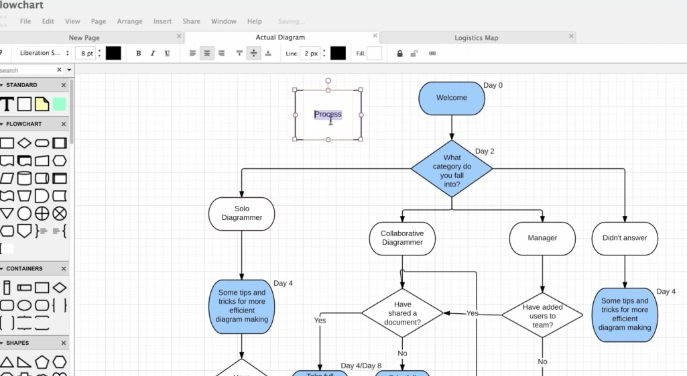Tool For Uml Diagrams
UMLet's design goals are also described in. Custom elements are described.
Optionally, for important messages, you can draw a dotted line with an arrowhead pointing back to the originating class instance; label the return value above the dotted line. Personally, I always like to include the return value lines because I find the extra details make it easier to read. Reading a sequence diagram is very simple. Start at the top left corner with the 'driver' class instance that starts the sequence. Then follow each message down the diagram. Remember: Even though the example sequence diagram in Figure 4 shows a return message for each sent message, this is optional.
UML 2.x diagrams. Faster to create UML than Excel or non-UML-specific drawing tools. Source Code Integration. Reverse Engineering and Source Code Generation supported.★Learn more. API & Plugins. Everyone has different design process. You can add features with Plug-ins. Team Development.
Samsung syncmaster monitor manual. Statechart diagram is used to represent the event driven state change of a system. It basically describes the state change of a class, interface, etc.

For example, the return value theStudent is indicated coming back from the Student class as the result of invoking a message, whereas no return value is indicated as the result of sending the message isEligibleToEnroll(theStudent) to Seminar. My style is not to indicate the return values when it's obvious what is being returned, so I don't clutter my sequence diagrams (as you can see, sequence diagrams get complicated fairly quickly). Shows an alternate way to indicate return values using the format message: returnValue for messages, as you can see with isEligibleToEnroll(theStudent): false. Notice the use of stereotypes throughout the diagram.
Azhagi tamil font free download. Extendable to type in ANY language ANY font ANY keyboard Transliterate in any Tamil font, availing a unique facility Convert to any Tamil font, availing a unique facility Never-Before-Seen Tamil fonts converter Convert MS-Word Tamil docs directly And much much more.
Menu ► • • • • • • • • • • • • • • • • • • • UML 2.5 Diagrams Overview A UML diagram is a partial graphical representation (view) of a model of a system under design, implementation, or already in existence. UML diagram contains graphical elements (symbols) - UML nodes connected with edges (also known as paths or flows) - that represent elements in the UML model of the designed system. The UML model of the system might also contain other documentation such as use cases written as templated texts. The kind of the diagram is defined by the primary graphical symbols shown on the diagram.
For example from Solution Explorer, right click on your Solution and choose Add New Item. In the categories, you'll see 'Distributed System Diagrams' and you'll be able to create Application Diagrams, Logical Datacenter Diagrams and System Diagrams. If instead you right click on your C# project (for example) and choose Add New Item, in the list of items you can create you should see Class Diagram. Hopefully this will give you what you need. What are you trying to do with UML? VSTS doesn't directly give you the ability to draw diagrams that exactly match to the official UML document types. However, there are a variety of diagram types that we support which are similar to UML equivalents.
– Aug 15 '13 at 9:05. For me it's Enterprise Architect from Sparx Systems. A very rounded UML tool for a very reasonable price. Very strong feature list including: integrated project management, baselining, export/import (including export to html), documentation generation from the model, various templates (Zachman, TOGAF, etc.), IDE plugins, code generation (with IDE plugins available for Visual Studio, Eclipse & others), automation API - the list goes on. Oh yeah, don't forget support for source control directly from inside the tool (SVN, CVS, TFS & SCC). I would also stay away from Visio - you only get diagrams, not a model. Rename a class in one place in a UML modelling tool and you rename in all places.
Unified Modelling Language “Object” diagrams show a partial or a complete view of a system’s structure within some specific period of time. The so-called Unified Modelling Language “Use Case” diagrams can be the representations of a user's interaction with some system and with their aid you can depict some particular specifications of a use case. Film barat terbaru 2017. The so-called Unified Modelling Language “Sequence” diagrams are also known as interaction diagrams with the help of which it is simpler for you to show the way some particular processes operate with each other and in which order they do it. The UML “Communication” diagrams model the interactions between different parts in terms of sequenced messages. “Communication” diagrams represent the information from “Use Case”, “Class” and “Sequence” diagrams, describing the dynamic behaviour and the static structure of some system. The UML “Activity” diagrams are the representations of the workflows of the actions as well as the activities with an iteration, choice and concurrency. In the Unified Modelling Language “Activity” diagrams there are models of both organisational and computational processes (for example, workflows) represented and this type of UML diagrams in general represents the overall flow of the control.